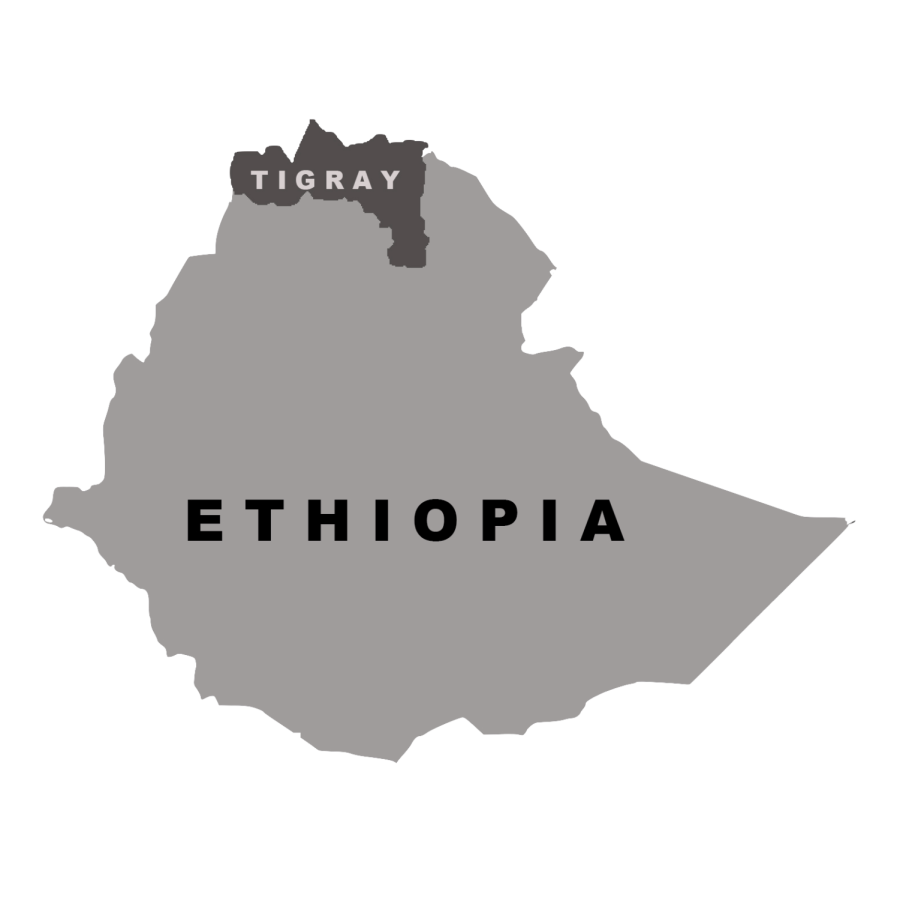Half million deaths not deemed newsworthy: the Ethiopia-Tigray war
On November 2, 2022, the war between Ethiopia and Tigray came to an end, with approximately 500,000 dead and almost no international media coverage.
After almost two years of fighting, the civil war between the Ethiopian Government and Tigray has come to an end. Despite a peaceful resolution to the conflict, low press coverage during the war allowed human rights abuses committed by both sides to go unreported.
The conflict began when Ethiopia’s Prime Minister, Abiy Abhed, used military force to suppress the Tigray People’s Liberation Front (TPLF), an ethnic nationalist paramilitary group that governed the Tigrayan region. The conflict is estimated to have killed up to half a million people and internally displaced around two and a half million others as of November 8, 2022, according to the United Nations. While many people were killed in conflict, more than 300,000 people died of starvation or lack of health care due to the region’s isolation. The region has been cut off from internet and phone access, and the Ethiopian government made it extremely hard to enter the region, which affects the extent to which the media can cover the crisis.
“For the last 16 months, [the Tigray Region] has been the most isolated region in the world when it comes to access and information gathering,” said Kjetil Tronvoll, professor of peace and conflict/international studies at the Oslo New University in Oslo in an interview with the Urban Legend.
With such stringent regulations, journalists had a difficult time obtaining any photographs or videos, and information that did come out of the region from Ethiopian journalists was not as trusted by the international community due to Ethiopia’s influence over the news.The government also heavily cracks down on reporters; along with neighboring Eritrea, Ethiopia has one of the highest rates of imprisoned journalists.
Additionally, Tronvoll cites the fact that conflict has always been a large part of Ethiopia’s history. Ethiopia has been at war with neighboring Eritrea multiple times, and internal fighting has remained constant throughout Ethiopia’s history. Tronvoll speculates there is little news value in this conflict, which blends in as one of Ethiopia’s many conflicts, despite the war’s heavy implications.
“[The war] has very low excitement for news audiences in [the] U.S. or Europe…” said Tronvoll. “We feel more connections to a country [and] a people who are both geographically but also culturally closer to us,”
Compared to the Russo-Ukrainian war, the Tigray conflict gets significantly less coverage. Ukraine’s Eastern European location and majority white racial demographic has led some to speculate that the crisis gets more support and visibility in the media than conflicts between countries with larger populations of people of color.
“The humanitarian crisis in Tigray is [worse] than Ukraine,” said World Health Organization’s Director General Dr. Tedros Adhanom Ghebreyesus in a recent press hearing. “Maybe the reason [the crisis is ignored] is the color of the skin of the people of Tigray.”
Despite such claims, Tronvoll believes that the reason is more nuanced than that. “I don’t think it is necessarily that direct [of] a correlation,” he said in response to Dr. Tedros’ claims. “It’s more the cultural and geographical distance than actually the color of the skin.” Tronvoll did recognize that race played some part in the coverage and reaction to the war but also noted that it was just one of many reasons.
A combination of these three factors and potentially many more resulted in a dangerous amount of underreporting on Tigray.
“There’s no disincentive for the parties involved to commit [human rights abuses] when there is no transparency. It’s not being brought to light in the international community,” said Guy Leavitt, a history teacher at Urban.
Without access to reliable information it was difficult to verify accounts, but the UN reported that all sides in the conflict likely committed human rights abuses, suggesting civilian drone strikes, forced starvation, sexual violence and looting and destruction. The atrocities perpetrated by both sides were largely enabled by the lack of press coverage of the conflict.
On November 3, 2022 the Ethiopian government and the TPLF reached a peace agreement, officially ending the war. Despite this, the future of peace in the region remains uncertain. The deal was struck without any representatives from the Eritrean government, another major influence in the conflict. While the treaty is a step towards resolution, it remains to be seen whether the peace will hold. ◼












